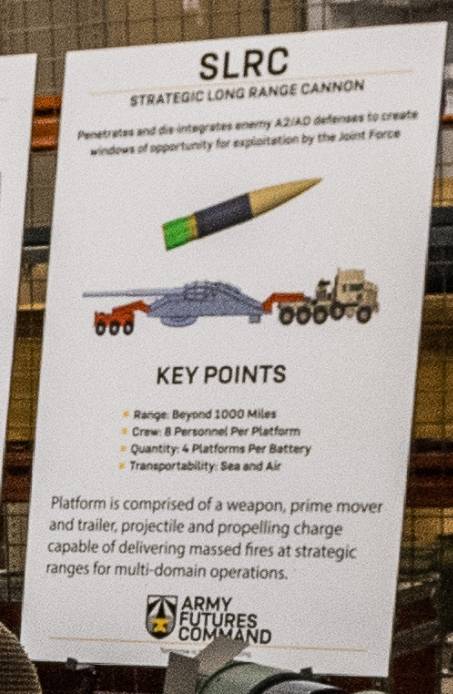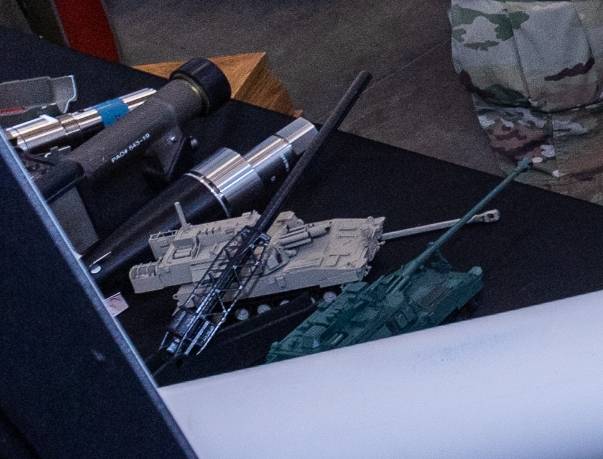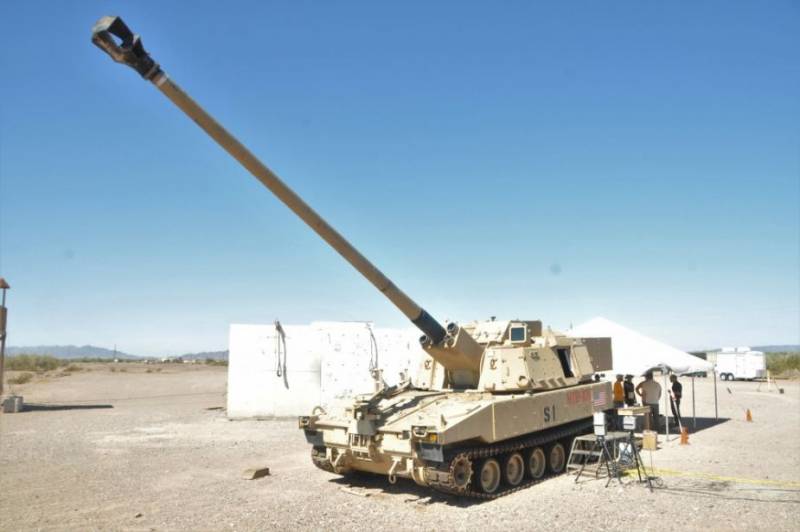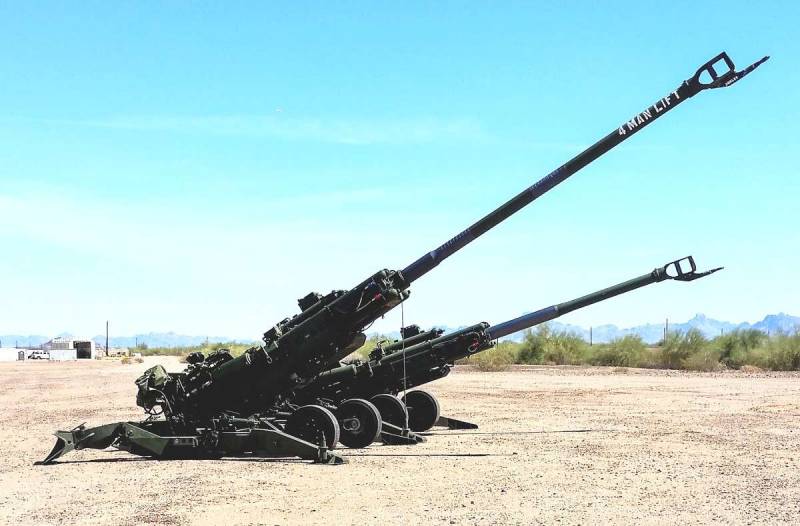Ultra-Long Range and Extra-Long Optimism: The Strategic Long Range Cannon Project
Now in the United States, several promising models of missile and artillery weapons are being developed. One of these projects provides for the creation of an ultra-long-range cannon capable of solving strategic tasks. The finished product Strategic Long Range Cannon (SLRC) is expected to enter the military in the coming years.
Plans for the near future
The development of the SLRC project was announced not so long ago. At the same time, the Pentagon immediately revealed the main goals and objectives of such a project, as well as the expected timing of the work. Defense officials spoke of the need to create a "strategic range" cannon capable of sending shells 1000 nautical miles. The prototype was planned to be put on trial in 2023. After the tests, the army will have to decide on the future of such a gun.
As part of the first announcements and statements, the officials did not specify the appearance of the future SLRC. However, in February of this year, at one of the Pentagon events, some materials on the new project were shown. The command of the future army showed a poster with an approximate appearance of an artillery complex and a model of such a product. We also clarified some characteristics.
In early September, the head of the direction of advanced missile and artillery systems, Brigadier General John Rafferty, spoke about the current work on new projects. According to him, the SLRC gun has a high priority and is a scientific and technical task number 1. Plans to start testing in 2023 remain in place. In the remaining time, the Command of the future must complete the necessary work - and do what no one has done yet.
Ultra-long range complex
According to the published data, within the framework of the SLRC project, an artillery complex of a characteristic appearance with unique capabilities is being developed. In the available materials, a system is depicted with the possibility of transporting by road and transporting a military transport aviation... This allows one to imagine the possible dimensions and weight, but their exact values are unknown.

Possible SLRC look
The main element of the complex is a carriage, reminiscent of the assemblies of high-power guns of the past decades. It can have its own base plate and traverse mechanisms for circular firing. It is also necessary to use certain means of loading and discharging, taking into account the parameters of ammunition. For transportation, a removable wheel drive and a truck tractor are offered.
The caliber and length of the barrel remain unknown, which makes it impossible to assess the ballistic characteristics of the system. At the same time, the shown model has a characteristic truss near the breech that holds the barrel - this may hint at the significant mass of the latter, associated with a large caliber and length. Loading, obviously, will be carried out from the treasury using appropriate mechanisms.
A promising projectile is being developed for the SLRC, capable of hitting targets at ranges of more than 1000 nautical miles (1852 km). The creation of such a product is a particularly difficult task that can be solved in different ways, but the desired result is not guaranteed. The required range can be shown by an active-rocket projectile with an increased efficiency engine and improved aerodynamics.
Due to the long range, the presence of guidance means becomes mandatory. The most probable is the use of satellite or inertial navigation to hit a target with known coordinates.
In the context of the projectile for the SLRC, a number of serious questions remain. So, the existing technologies in the field of guns and ammunition make it possible to obtain a firing range of no more than 80-100 km, and so far only on an experimental basis. How exactly the range will be brought to the desired thousand miles is a big question. It is possible that the SLRC ammunition will be more similar in design to a guided missile than to a conventional design.

Models of new artillery systems. Probably among them there is SLRC
The SLRC artillery complex must be highly automated. It is proposed to reduce the calculation of the installation to 8 people with the distribution of all functions between them. The minimum combat unit will be a battery of four guns. Obviously, to control such artillery systems, new means will be needed, significantly different from modern missile and artillery systems.
Desired features
The proposed appearance of the artillery complex provides a number of important advantages. At the same time, we are talking about preserving all the positive qualities of cannon artillery with a sharp increase in range and, possibly, power.
The main and fundamental advantage of the SLRC system lies in the ability to deliver precise strikes against targets at the operational-strategic depth of defense. From the point of view of range, such a gun becomes a direct competitor to medium and short-range ballistic missiles, but should have several serious advantages over them.
For all its complexity, the projectile for the SLRC should be simpler and cheaper than any MRBM or BRMD - both in production and in use. In addition, the artillery battery is able to conduct prolonged fire without much difficulty and send maximum shells to the target in a minimum time. Artillery ammunition, incl. with a range of 1000 miles, it can be detected and tracked in flight, but intercepting it - unlike a rocket - is extremely difficult or even impossible. The presence of homing means will ensure high accuracy of hitting the target. The retaliatory strike is complicated due to the high range and time for its preparation; gunners are more likely to leave before enemy planes or missiles arrive.
The SLRC complex is considered as a strategic tool for breaking into enemy defenses, destroying key targets, etc. Guided shells will be able to hit command centers, air defense and missile defense systems, bases, etc. Due to the fundamental advantages of artillery and increased characteristics, it must combine high efficiency, high combat stability, etc. A massive artillery strike will "open the way" for combat aircraft, missile systems and ground forces.
Circle of tasks
With all the expected advantages, the SLRC complex already at the development stage differs unfavorably from other artillery systems in high complexity and cost. The Pentagon understands this very well, but they are ready for new spending and consider them appropriate. At the same time, there is a remarkable optimism. It is planned to complete research work in just a few years - a prototype is going to be built no later than 2023.
Thus, in the next three years, the Command of the future army and related organizations will have to determine the final appearance of the complex as a whole, as well as solve a number of important design tasks. It is necessary to create a weapon of the required caliber with the required ballistics, develop a fundamentally new projectile, communication and control equipment, etc.
If the current plans are fulfilled, and fire tests of a full-fledged prototype begin in 2023, then the completion of development work is possible in the second half of the decade. Accordingly, by the beginning of 2030, the US Army can expect to receive fundamentally new strategic weapons, and the SLRC ultra-long-range cannon will not be the only novelty. Time will tell whether the Pentagon will be able to fulfill its plans.
- Ryabov Kirill
- US Army Twitter.com/lfx160219


Information